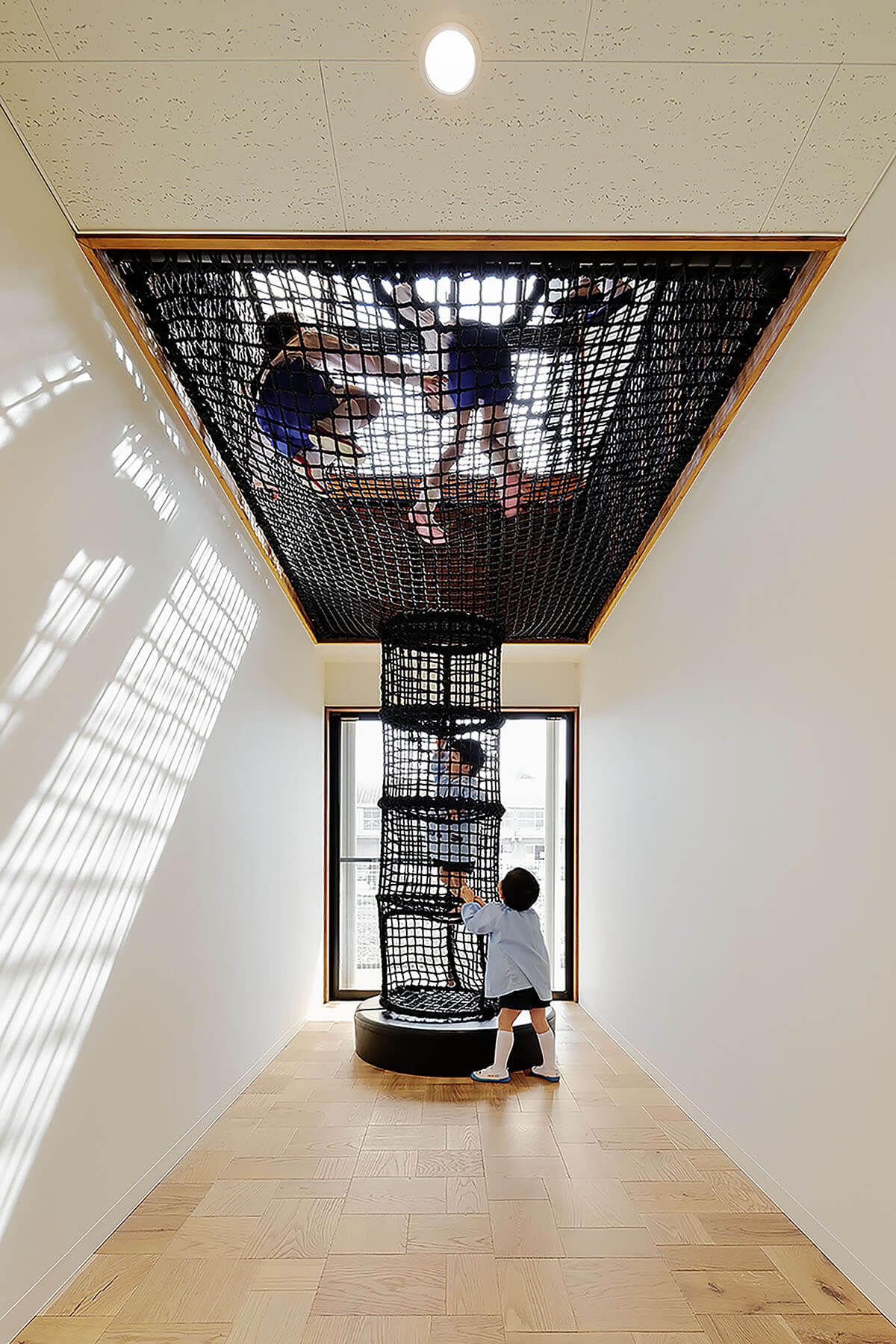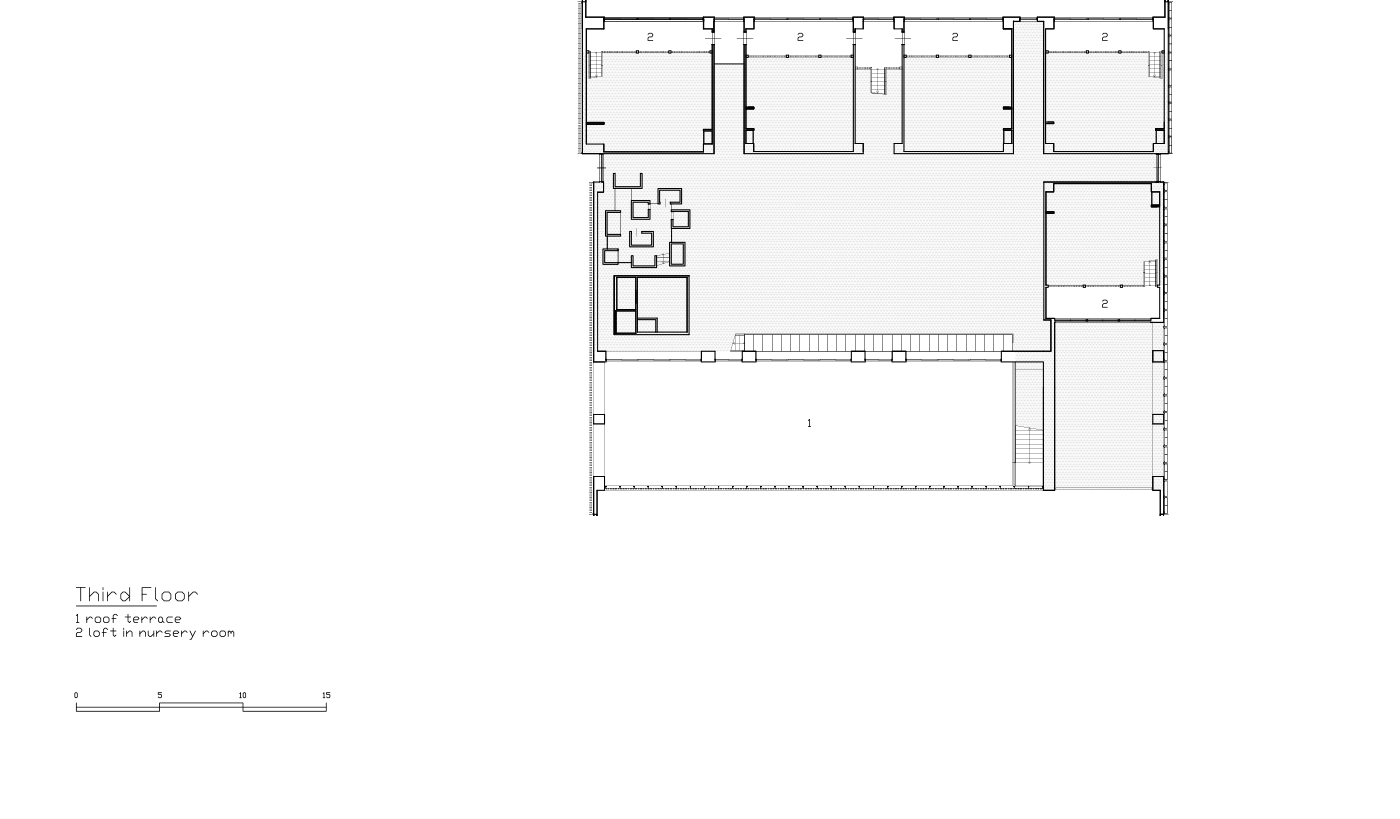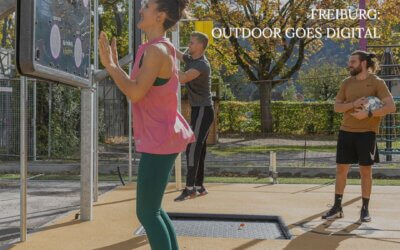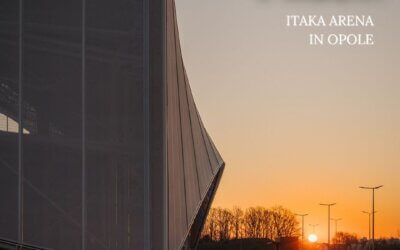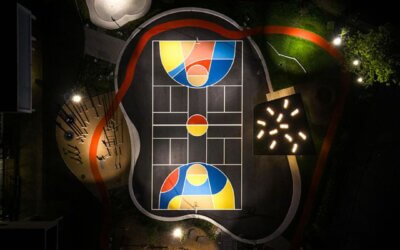Architecture as a toy
KO Kindergarten in Matsuyama
HIBINOSEKKEI
Move it!
Movement is becoming less and less a matter of course. Children are brought to the kindergarten by car. Thus they miss the first chance of the day to let off steam and gain experience. At home, they sit in front of the television or on their mobile phone or tablet. Not always, but more and more often. Playing outside in the fresh air has become less, the awareness for nature and one’s own body decreases.
This is the course of the world. There still is architecture. It can create incentives and an environment in which (not only) the children want to be active — as with the reconstruction of the KO kindergarten in the Japanese city of Matsuyama (Ehime Prefecture).
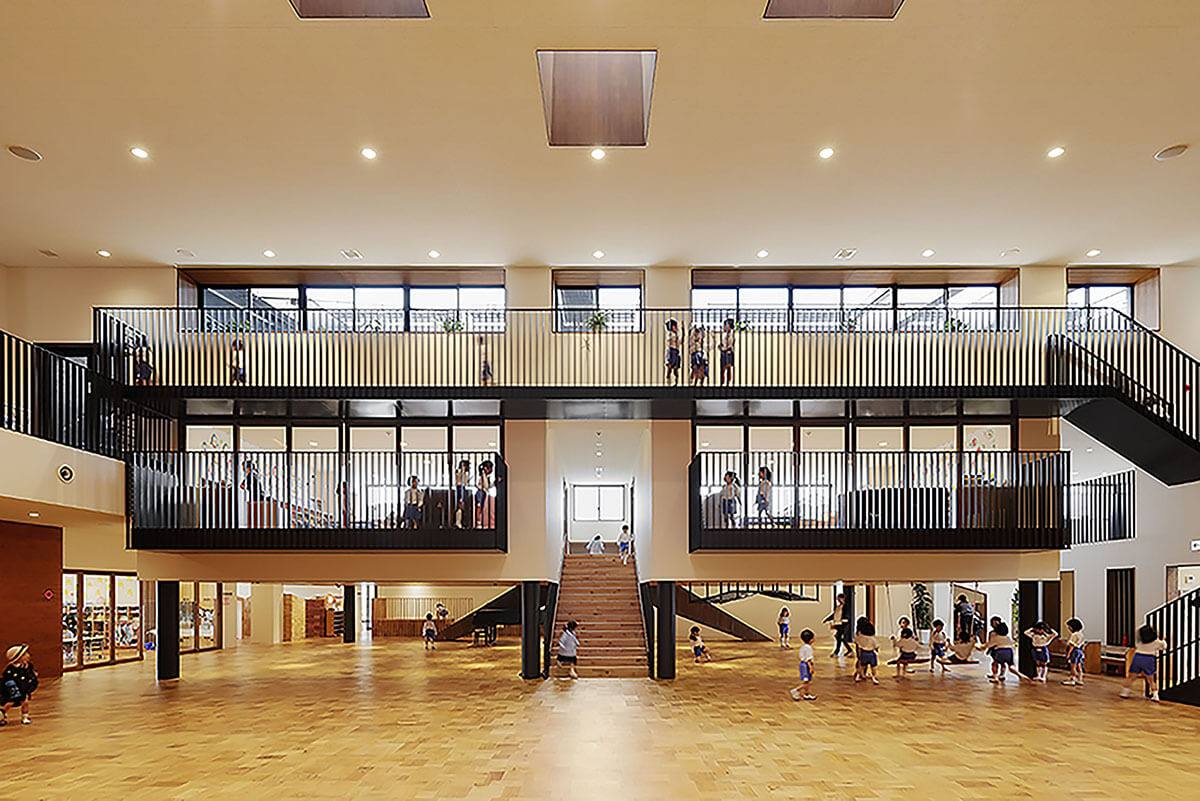
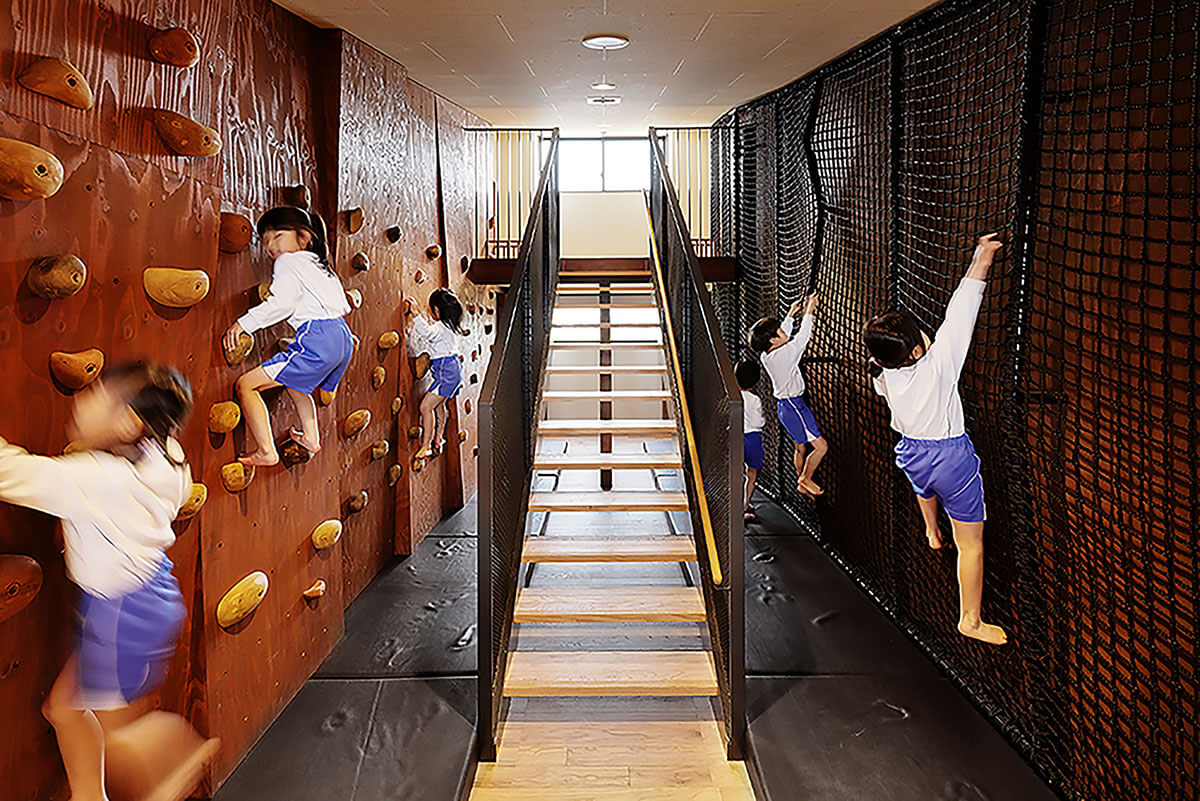
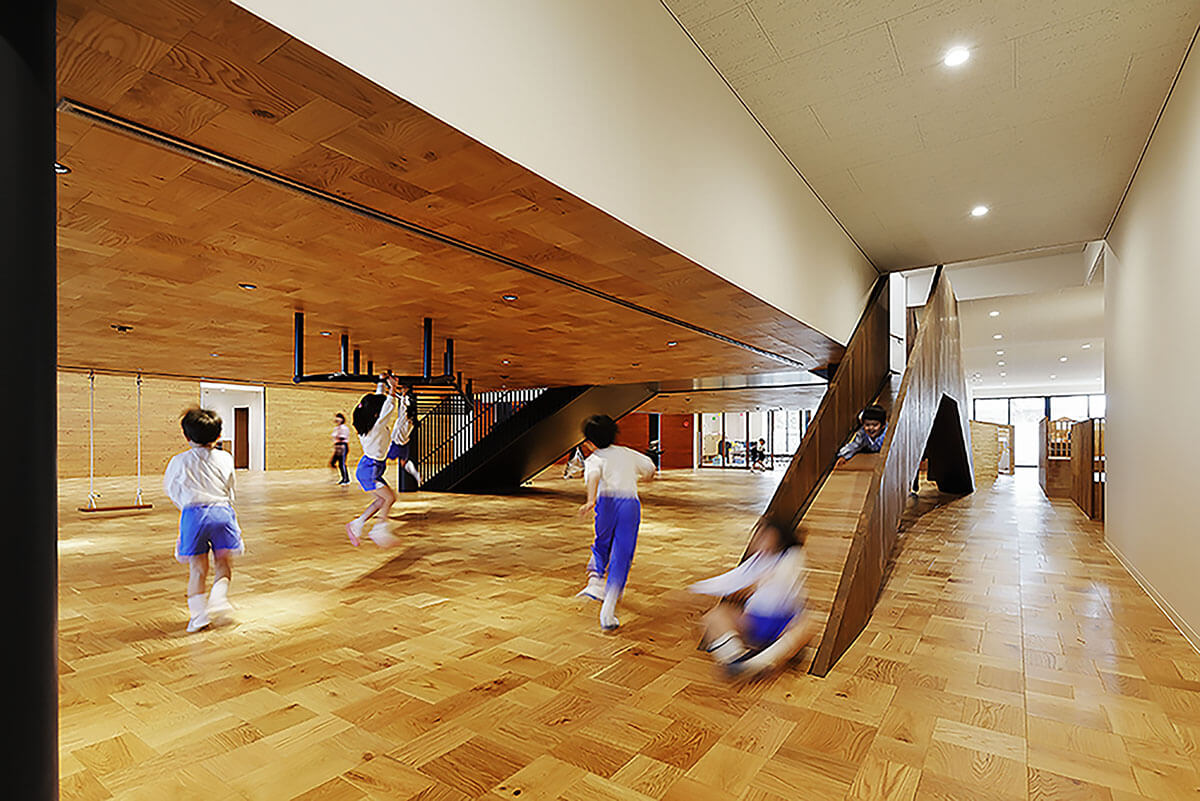

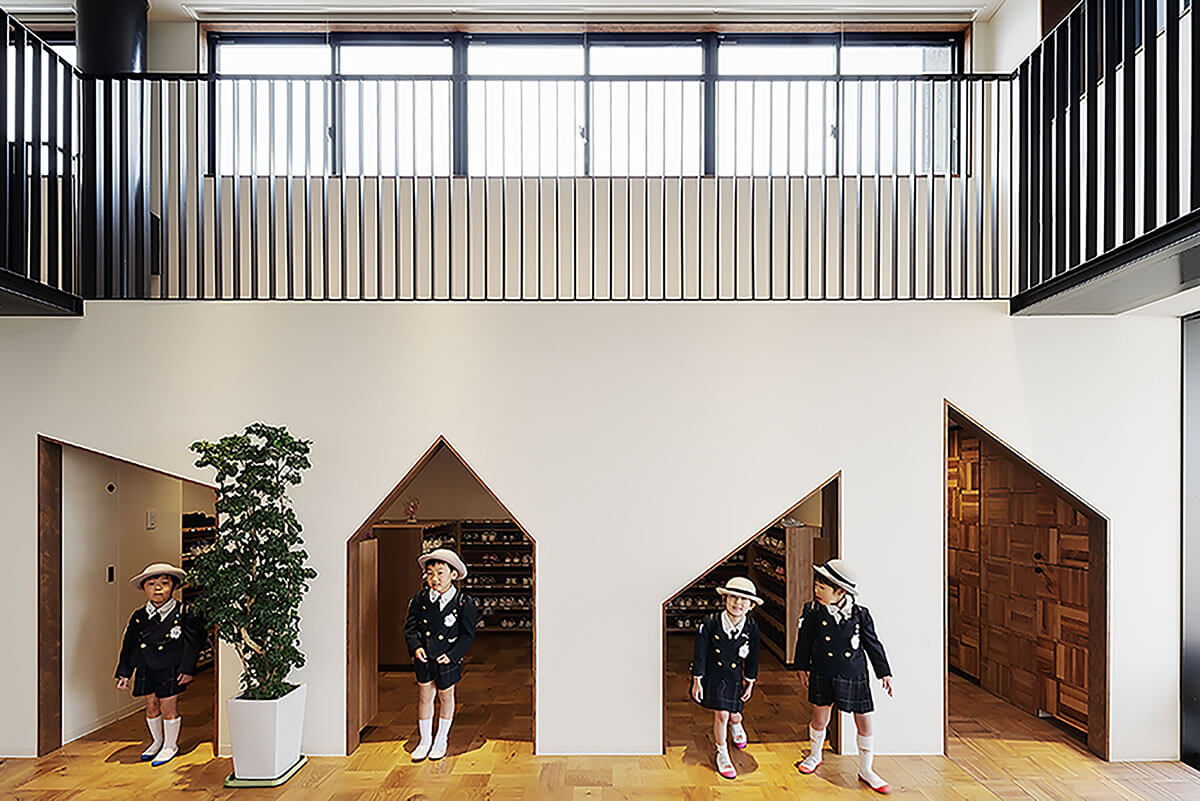
Niches
The great special feature of the KO Kindergarten, however, are the 14 different niches and remaining areas between the rooms and levels, from which the architects of Hibinosekkei have created game spaces and free areas for the 450 children.
Everything is somehow shifted horizontally and vertically, around every corner there are new “streets”, landscapes and challenges — unique play areas. The building is the toy. The many installations from KDS (Kids Design Labo) make a decisive contribution to this.
Pedagogics
First experiences and studies show that the three- to five-year-old children move 20 percent more in this new kindergarten than in the old building. In addition, skills such as “throwing”, “driving through” and “crawling” can only be “trained” in the new atmosphere.
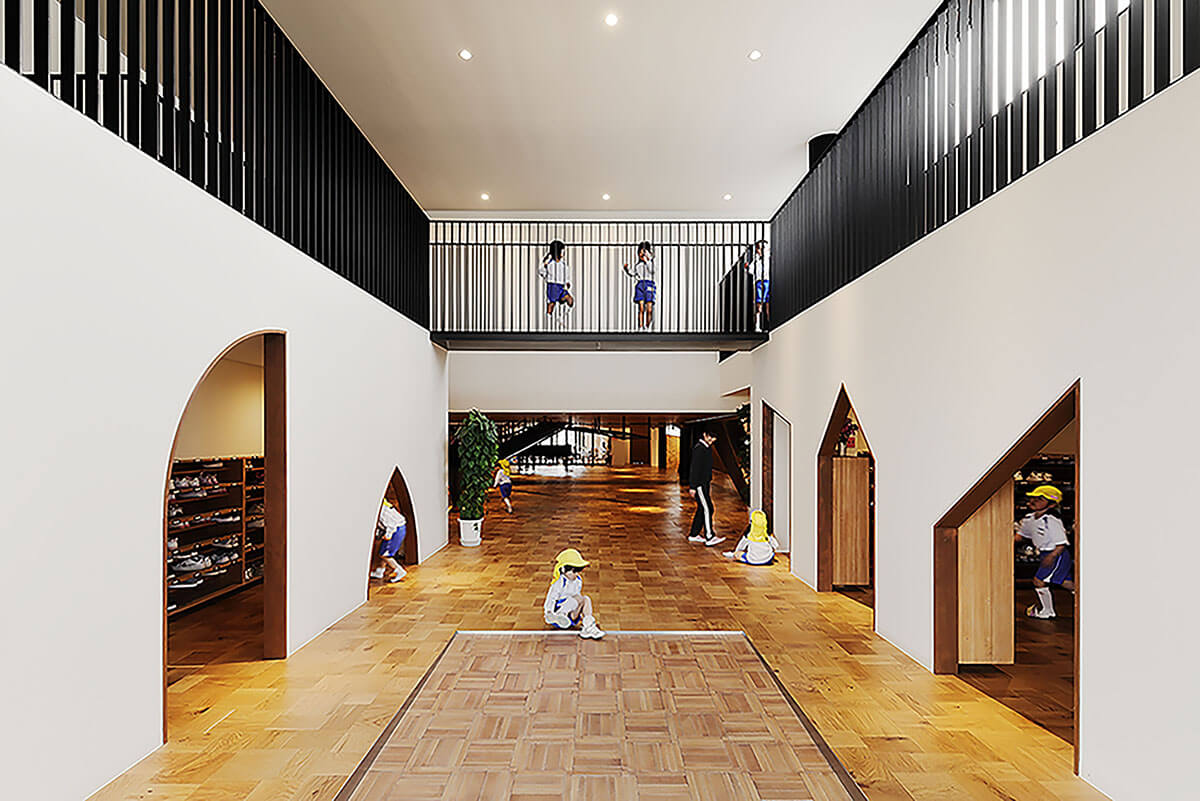
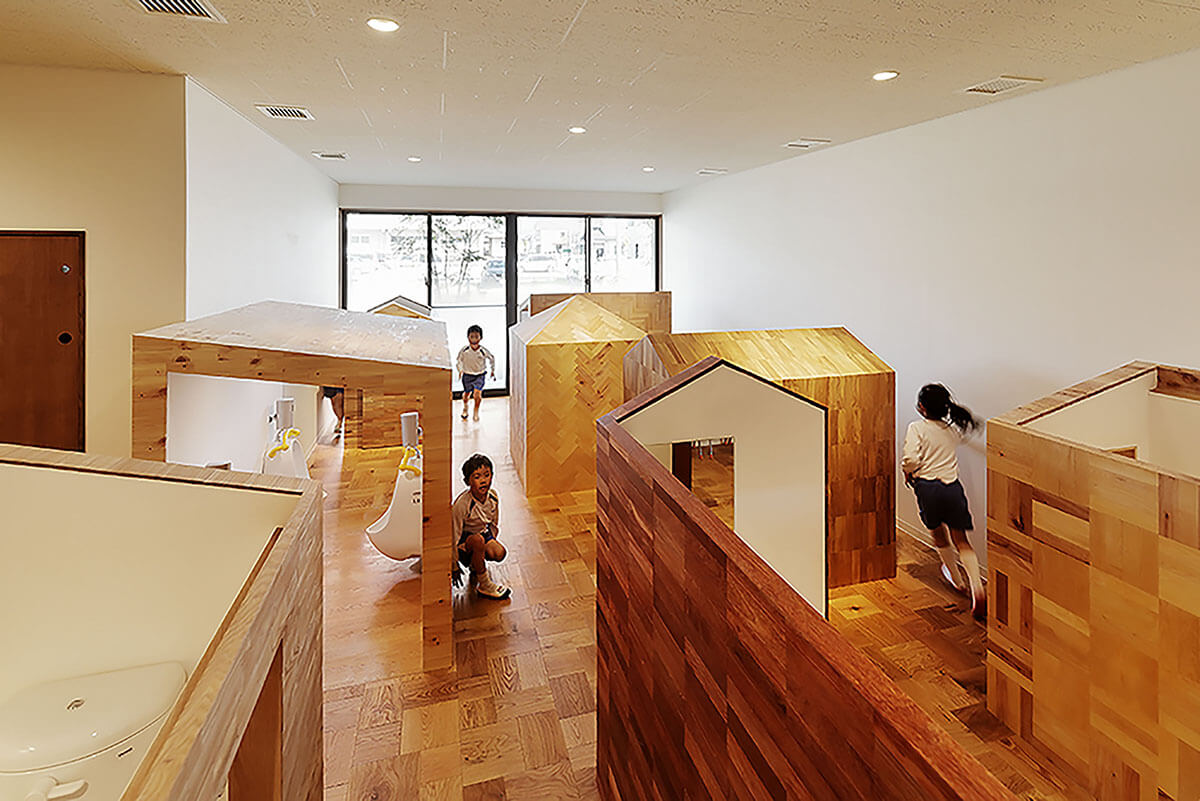

Architecture that inspires courage
The KO Kindergarten creates a lot of new play areas. The children accept all challenges enthusiastically. Not only do they improve their physical abilities, they also constantly develop new games and new interests. Architecture that inspires courage and encourages children to play and move as a matter of course.
We did this.
Follow us!
Want more?
Visit our Blog
Freiburger Turnerschaft
Outdoor for Everyone.
Itaka Arena
Architecture and Material
Skakkeringen
When being outside feels cooler than staying inside.


